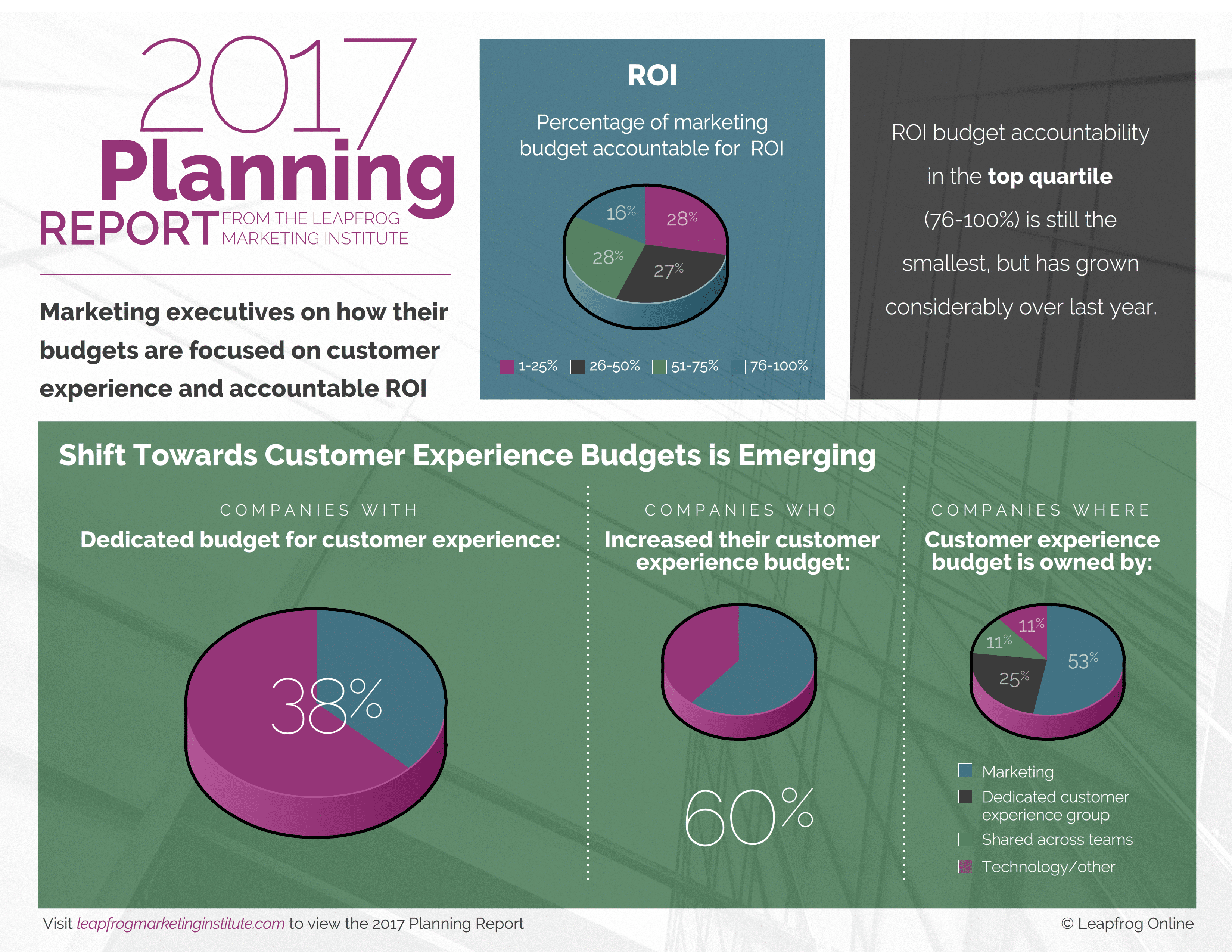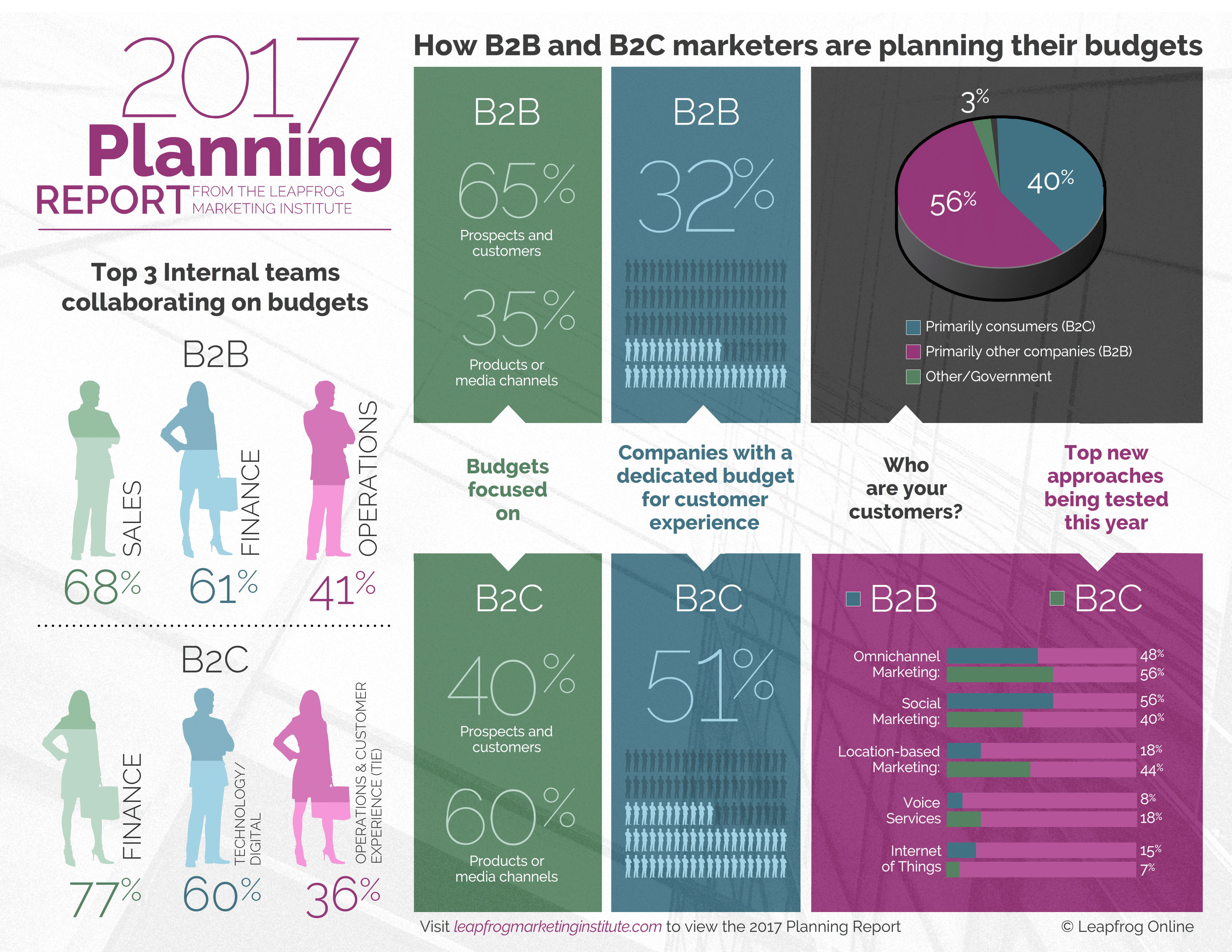The customer journey is a top priority for communications execs—but few have created a dedicated customer experience (CX) budget for their brands, according to the 2017 Planning Report from the Leapfrog Marketing Institute, the research arm of performance marketing solutions company Leapfrog.
One surprising result in the report finds that only 38 percent of executives have a budget dedicated specifically for the customer experience. The good news is 60 percent of those who do have dedicated CX budgets have increased them since last year, and an additional 9 percent have a dedicated CX budget for the first time. Only 7 percent report a decrease in budget since last year.

“With the growing proliferation of devices and screens, CMOs know the importance of building relevant and personalized customer experiences across all touchpoints,” said Jason Wadler, chair of the Leapfrog Marketing Institute and EVP at Leapfrog, in a news release. “The fact that only two out of five executives report having a dedicated customer experience budget means CMOs must work harder to bring their enterprises in line with customer expectations or risk losing to more agile competitors.”
The report focuses on how budget owners are evolving their strategic and financial plans to become more consumer-centric. It explores the growing alignment between marketing and technology, and the budgetary planning process in which companies build their customer experiences. In addition, the report examines the planning differences between B-to-B and B-to-C companies.

Additional insights include:
Measurable ROI
Budget accountability for ROI is surprisingly low, especially given the growing need for marketers to deliver results that boost financial metrics. Only 44 percent state that greater than half of their budgets are accountable for measurable ROI.
Collaboration with internal teams
Reinforcing the growing collaboration among key business partners, seventy percent of executives work with their internal partners on higher level strategic activities, such as creating financial plans (37 percent) or prioritizing projects (33 percent), compared to the 19 percent who worked more tactically with their partners to simply establish budget allocations.
Financial planning: B2B vs. B2C
There are also meaningful distinctions in how B2B and B2C companies collaborate on their strategic and financial plans, and their focus on dedicated CX budgets.
For B2C companies, the technology team is a prominent partner (60 percent), just behind marketing and finance. For B2B companies, the sales team ranks as the second highest (68 percent), even exceeding finance in priority.
As for a dedicated CX budget, 32 percent of respondents at B2B companies cited they have one, compared to 51 percent of B2C companies. Yet, 65 percent of B2B companies have shifted budgets to be consumer-centric, compared to only 40 percent of B2C companies.
To gather this data, the Institute analyzed survey responses from 119 executives who are responsible for marketing budgets. The Planning Report also provides perspectives from Leapfrog Marketing Institute Advisory Panel members: Deborah (Deb) Hall-Lefevre, Senior Vice President and Chief Information Officer at Couche-Tard; Bill Pearce, Assistant Dean at Berkeley’s Haas School of Business; and Tony Wells, Senior Vice President, Chief Marketing Officer North America for Schneider Electric.



